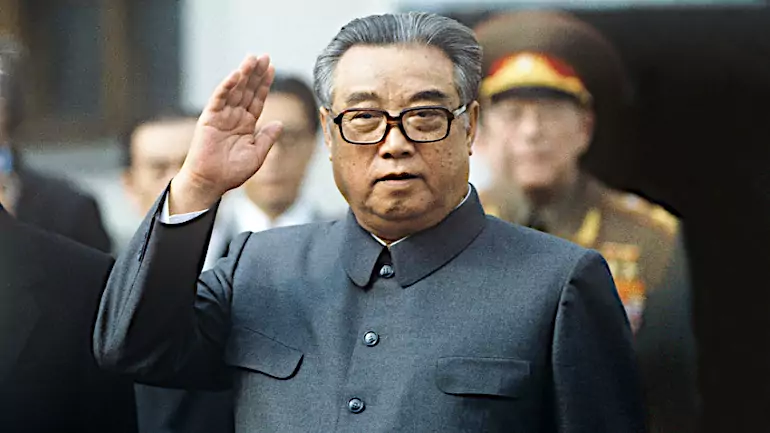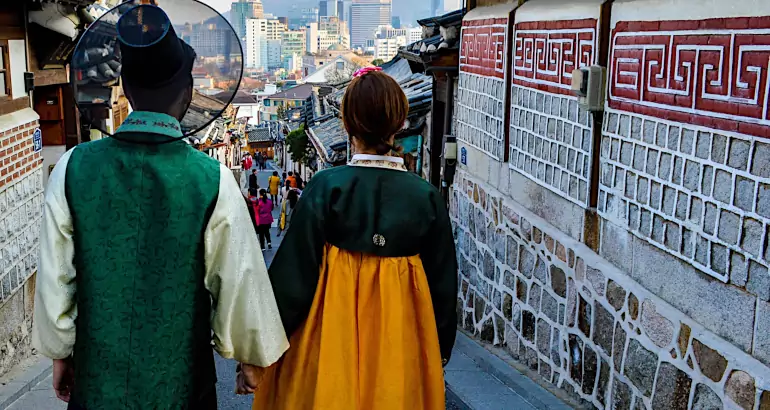Discover the story of Kim Il-Sung, the founding figure of North Korea

Kim Il-Sung is undeniably one of the pivotal figures for comprehending the history of North Korea, renowned as the Eternal President and leader of the Communist Party. He established a system that persists to this day.
While Kim Jong Un is the most recognizable name in present times as the current leader of the country, both preceding and succeeding him, there exist intriguing figures within this family who are indispensable for grasping the essence of North Korea.
The Kims and the Historical Context
In 1945, the Korean peninsula was partitioned along the 38th parallel, resulting in two distinct territories with contrasting political ideologies: communism in North Korea and capitalism in South Korea.
In September 1948, North Korea proclaimed itself an independent state under the leadership of the military commander Kim Il-Sung, the founder and perpetual president of the North Korean nation.
Thus, the succession of power within the Kim dynasty emerged, maintaining control of the nation for three generations.
Starting from Kim Il-Sung (the founder and president of North Korea), followed by Kim Jong-Il (Il-Sung's son and the first leader of North Korea), then Kim Jong-Un (Jong-Il's son and the second leader of North Korea), and finally Kim Yo-Jong (Jong-Un's sister and chief propagandist).
Kim Il-Sung, the Eternal President
Kim Il-Sung, born as Kim Sung Ju, stands as the central figure from which the Kim dynasty emanates. He was born on April 15, 1912, in Nam Ri, Gopyung District, Daedong County, Pyongsa Province, South Korea, to parents Kim Hyung Jik and Kang Ban Suk.
Kim Il-Sung's prominence stemmed from the power vacuum experienced in the northern part of the Korean peninsula, leading the Soviets to designate him as the leader of the united front of Korea between 1941 and 1945.
During his youth, he underwent training as a special agent for the Soviet forces and later returned to his homeland as a major in the Red Army during the post-World War II era.
In this period, Il Sung established institutions such as the Workers' Party of Korea (WPK) in 1946. In September 1948, he rejected the United States' proposal to hold democratic elections under the supervision of the United Nations and declared the Democratic People's Republic of Korea (DPRK) or North Korea, assuming the role of prime minister.
The Beginning of an Ideology
Drawing inspiration from Mount Paektu, Kim Il-Sung formulated the Juche ideology (주체) – a set of principles encompassing the concentration of governmental authority, economic independence, cultural nationalism, and isolationism. His aim was to establish a self-reliant political framework.
According to the Kim family, their lineage can be traced back to Mount Paektu. They maintain that they are direct descendants of Dangun, the legendary founder of the Korean people, whose lineage bestowed upon Kim Il-Sung the leadership he sought.
A Beloved Leader
Throughout his nearly 50-year rule, Il-Sung portrayed himself as a highly esteemed leader in the nation. In 1972, he introduced a new constitution and proclaimed himself president of the Republic to uphold order and authority.
His regime was marked by extensive propaganda focused on his persona. He succeeded in eliciting adoration from North Koreans, who continue to pay homage to him, regarding him as "the Eternal President."
This reverence is evident in the monuments and paintings erected across North Korea to honor the Eternal President. Furthermore, religion is sidelined, with the only sanctioned cult being that dedicated to the Kim family.
In the realm of international politics, Kim upheld a communist ideology in alignment with China and the USSR, while pursuing a policy of hostility and confrontation with South Korea, Japan, and the USA.
Among his notable accomplishments was the establishment of Kim Il-Sung University in 1946, a publicly funded institution providing tuition-free education for North Korean citizens.
Analysts and media outlets have noted that in his final years, Kim Il Sung considered holding a summit meeting with South Korea. However, his plans were disrupted by health issues, and he passed away on July 9, 1994, due to a heart attack, preventing the anticipated meeting from taking place.
Despite projecting a friendly and protective persona in public, some North Koreans and international media outlets contend otherwise, alleging that Kim Il Sung's policies were repressive and totalitarian in nature.
One instance was the censorship of information and the harsh treatment of citizens who voiced opposition to the regime.
Another noteworthy aspect of Kim Il-Sung's life is that, due to an illness, North Korean state media was compelled to adhere to strict authoritarian rules.
Kim Il-Sung suffered from calcinosis, a condition that deformed his head, resulting in a lump the size of a tennis ball. As a result, the press was only permitted to photograph the president's left side to conceal the deformity.
The Heir's Ancestry
The North Korean president entered matrimony twice during his lifetime. His first marriage was to Kim Jong-suk, hailing from humble peasant origins, who actively participated in the communist guerrilla movement led by him.
From this union was born Kim Jong-Il, who would eventually ascend to power in North Korea. It's noteworthy that Il-Sung had two additional children with her: Kim Man-Il and Kim Kyong-Hui, who presently serves as the secretary of the Workers' Party of Korea organization.
His second spouse was Kim Song-Ae, his personal secretary. Together, they had three children: Kim Kyong-Il, Kim Pyong-Il (currently serving as North Korea's ambassador to the Czech Republic), and Kim Yong-Il.
The Eternal President laid the groundwork for policies that would guide future leaders in North Korea. However, what many didn't foresee was that upon his death, political leadership would pass to his descendants, establishing a dynastic order that endures to this day.
This same dynastic order led to Kim Jong-Il succeeding Il-Sung and later to Kim Jong-Un. The world remains vigilant whenever signs emerge that a new leader might assume control, given the inherited power dynamics.
For those interested in delving deeper into the history of North Korean leadership, stay tuned for our upcoming series of articles on the Kim dynasty. This will provide comprehensive insights into this controversial family and their role in shaping North Korea's trajectory.
 30 Fascinating Facts about South Korea and Koreans
30 Fascinating Facts about South Korea and Koreans Customs and Traditions: A Guide to Good Manners in South Korea
Customs and Traditions: A Guide to Good Manners in South Korea The Challenge of never having experienced a romantic relationship in South Korea
The Challenge of never having experienced a romantic relationship in South Korea Love in South Korea: Exploring Relationships and Dating Culture
Love in South Korea: Exploring Relationships and Dating Culture Quiz: Would You Be a Loser in South Korea?
Quiz: Would You Be a Loser in South Korea? Love in South Korea: Part 2 - Getting to Know Each Other
Love in South Korea: Part 2 - Getting to Know Each Other Crash Landing on You Netflix Review
Crash Landing on You Netflix Review Unfortunate Events for "Reply 1988" Cast: Untimely Passing, Battle with Blood Cancer, and Personal Turmoil
Unfortunate Events for "Reply 1988" Cast: Untimely Passing, Battle with Blood Cancer, and Personal Turmoil Queen of tears explained ending and summary
Queen of tears explained ending and summary

Leave a Reply